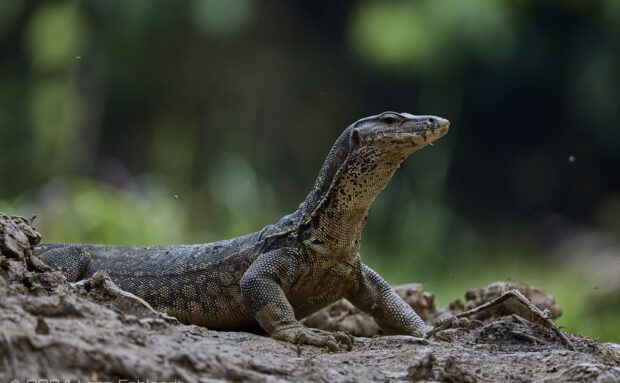
Asian water monitor – Varanus salvator (Laurenti, 1768) of Sabah / Borneo. Varanus salvator is a large semi aquatic monitor lizard native to South and Southeast Asia where it frequents rivers wetlands mangroves and even urban waterways and is among…

Asian water monitor – Varanus salvator (Laurenti, 1768) of Sabah / Borneo. Varanus salvator is a large semi aquatic monitor lizard native to South and Southeast Asia where it frequents rivers wetlands mangroves and even urban waterways and is among…
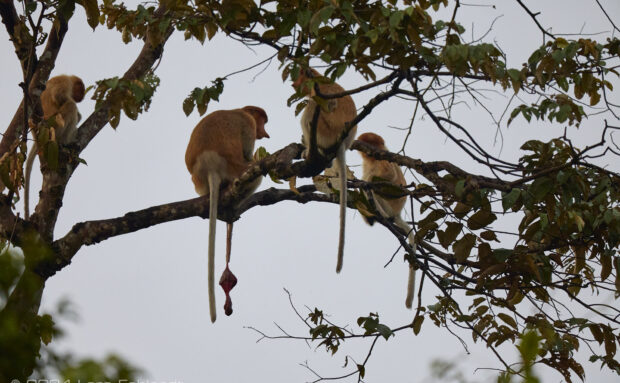
An early morning birth of a proboscis monkey – Nasalis larvatus Wurmb, 1787 – of Sabah / Borneo. Births of proboscis monkeys have rarely been documented, especially during the daytime. Nasalis larvatus reproduction is polygynous, with groups of males in…
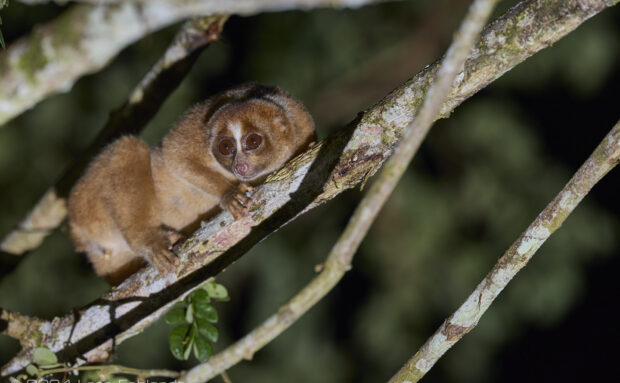
Philippine slow lori, Nycticebus menagensis (Lydekker, 1893) of Borneo, around 800m ASL. Nycticebus menagensis (Philippine slow loris) is a nocturnal, arboreal strepsirrhine primate of the family Lorisidae, distributed in northern and eastern Borneo and parts of the southern Philippine archipelago.…
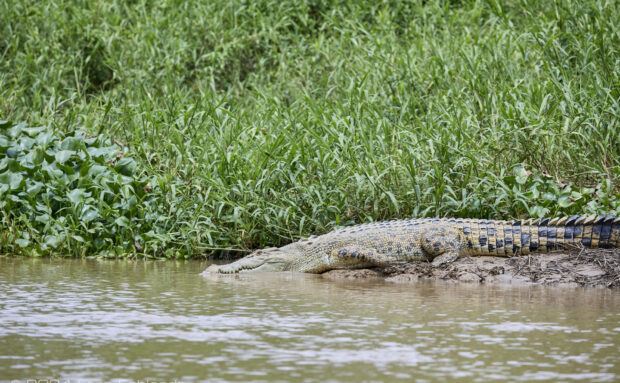
Saltwater crocodile – Crocodylus porosus Schneider, 1801 of Borneo – around 80m ASL Crocodylus porosus Schneider 1801, the saltwater crocodile, is the largest living reptile, with exceptional males approaching seven metres and about 1200kg while most adults are smaller; it…
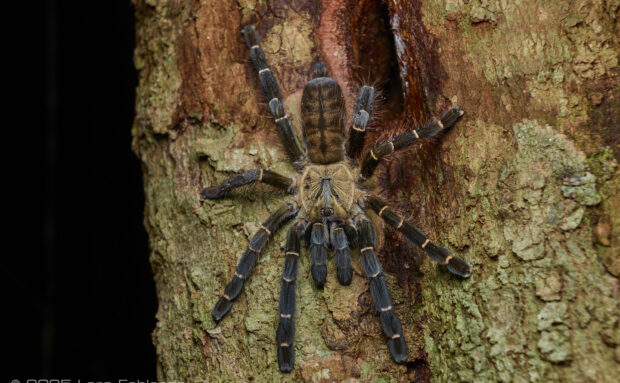
Citharognathus hosei Pocock, 1895 of central Sarawak, Borneo – around 800m ASL. Citharognathus hosei is the type species of the theraphosid genus Citharognathus within the subfamily Ornithoctoninae, described from Baram in Sarawak on Borneo from material collected by Charles Hose.…
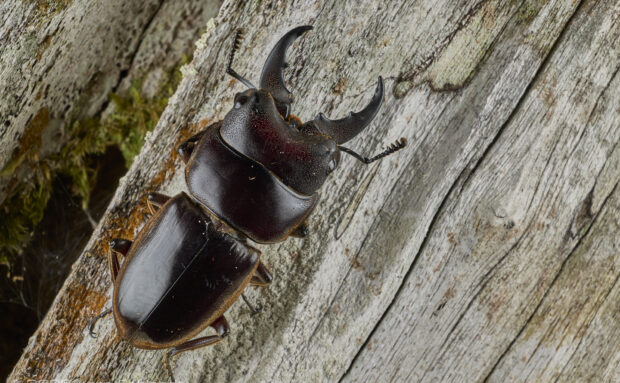
Stag Beetle, Dorcus mirabilis (Parry, 1864) – of Sarawak / Borneo around 1060m ASL Adults primarily take liquid carbohydrates, typically tree sap and other sugary exudates, and are most active from dusk through the night; they are often encountered at…
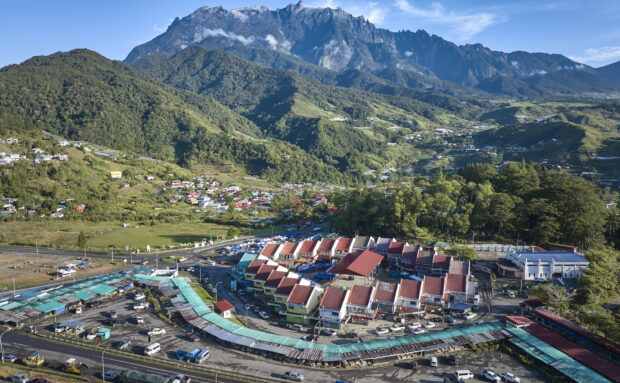
A visit to the Kundasang Market in Sabah at Mount Kinabalu. Kundasang Market is the everyday fresh-produce market of Kundasang, a highland town in Ranau District, Sabah, a few kilometres from Kinabalu National Park. Stalls line the main road through…
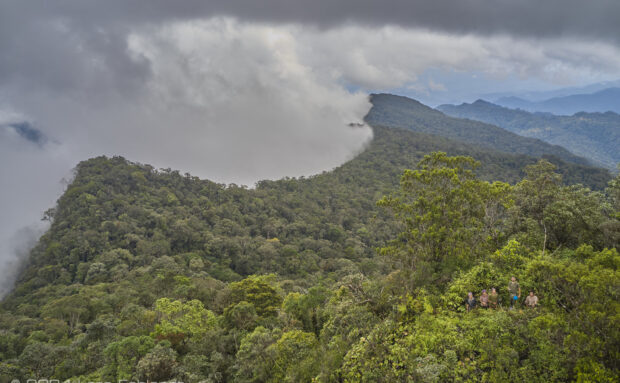
First ascent and biodiversity survey in a little-explored mountainous region of Sarawak (Borneo) – an expedition report In the spring of 2024, I was commissioned to join members of a Penan community in reaching an area in the interior of…
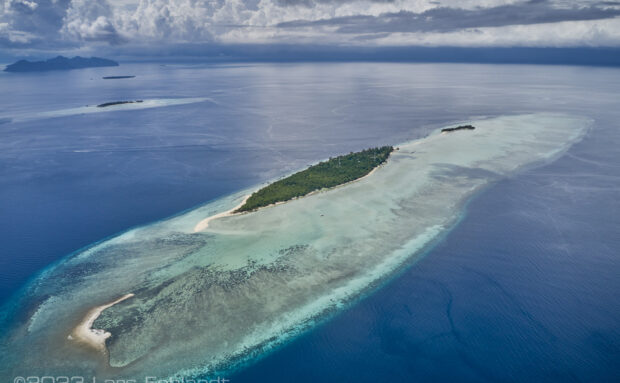
Eine längst überfällige Reise in ein Inselparadies. Kein Regenwaldabenteuer, sondern eine touristische Reise in den äußersten Osten Borneos. Nach vielen Jahren, die ich in Borneo verbracht habe, fällt es mir schwer zu glauben, dass ich nie die Gelegenheit hatte, die…

Die Rückreise während der SARS CoV2 Pandemie. Ein Virus aus China hat das alltägliche Leben weltweit lahmgelegt, auch Borneo blieb davon nicht verschont. Dieser Blogeintrag unterscheidet sich maßgeblich von allen anderen „Abenteuern“ die ich bisher schriftlich veröffentlicht habe. Das Reisen…
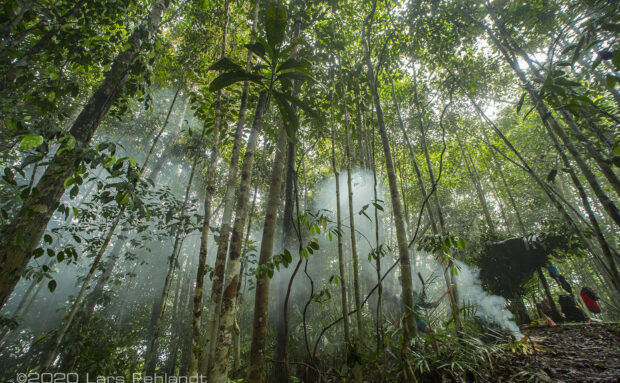
Wilden Orang Utans auf der Spur. Es war im Dezember 2019, als ich die Chance erhalten sollte, ein Regenwaldreservat zu besuchen. Dieses etwa 256km² große Gebiet an der Grenze zu Kalimantan, dem indonesischen Teil Borneos, ist zu 98% von Primärwald…
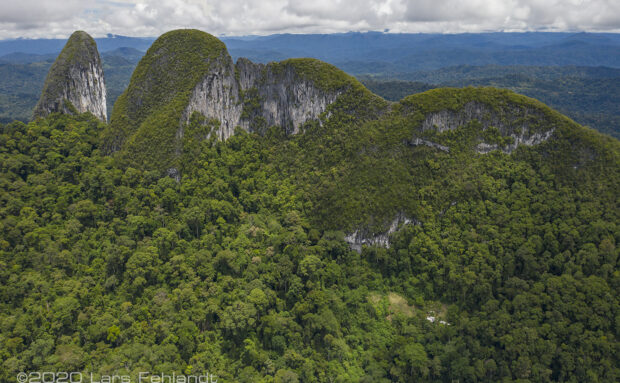
Eine Expedition zu den abgelegenen Turmkarst-Gebieten in Zentralborneo. Bei der folgenden wissenschaftlichen Expedition muss ich ein bisschen vorweg greifen, denn den Kontakt zum Besitzer dieser Hütte erhielt ich nur, weil ich vor zwei Jahren eine Expedition in ein ganz anderes…
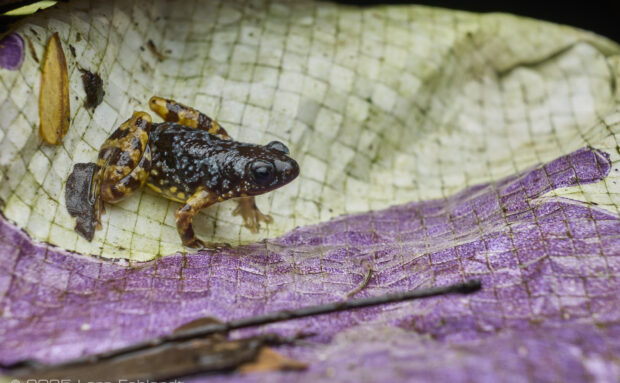
Saffron-bellied frog, Chaperina fusca Mocquard, 1892 – at an illegal waste dumping site in Kuching, south Sarawak / Borneo / Lowland 60m ASL Chaperina fusca is a small species of narrow-mouthed frog (family Microhylidae) and the only representative of the…
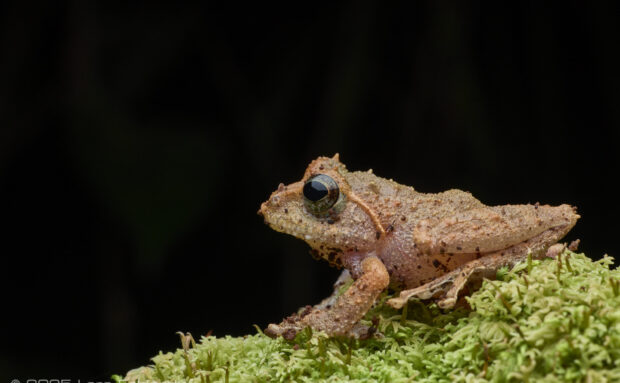
The western long-legged bush frog – Philautus kakipanjang Dehling and Dehling, 2013 of Sarawak / Borneo – around 1000m ASL Etymologically, the specific epithet kakipanjang is explicitly derived from two Malay words; kaki (“leg”) and panjang (“long”)—chosen to highlight the…
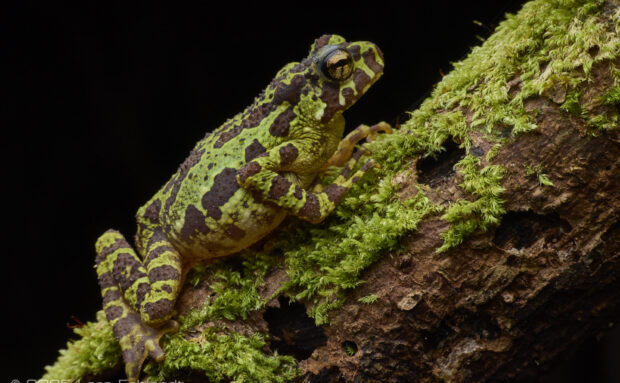
Rentapia everetti (Boulenger, 1896) (Everett’s Asian tree toad or marbled tree toad) of Sarawak / Borneo – around 950m ASL Rentapia everetti (Boulenger, 1896) is an arboreal toad (family Bufonidae) endemic to northern Borneo, where it occurs in Sarawak, Sabah,…
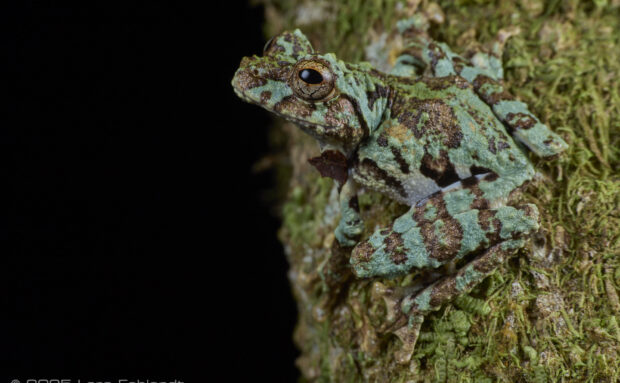
Unknown Bush Frog – Philautus sp. of Kalimantan / Borneo – around 1300m ASL It doesn’t happen often anymore that I see frogs in Borneo that I’ve never seen before, and it happens even less often that I have no…
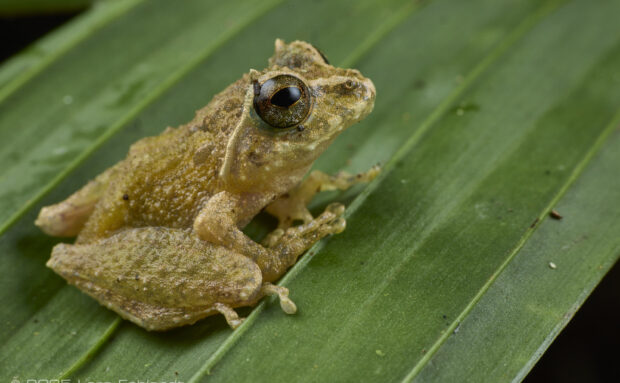
The western long-legged bush frog – Philautus kakipanjang Dehling and Dehling, 2013 of Sarawak / Borneo – around 1000m ASL Etymologically, the specific epithet kakipanjang is explicitly derived from two Malay words; kaki (“leg”) and panjang (“long”)—chosen to highlight the…
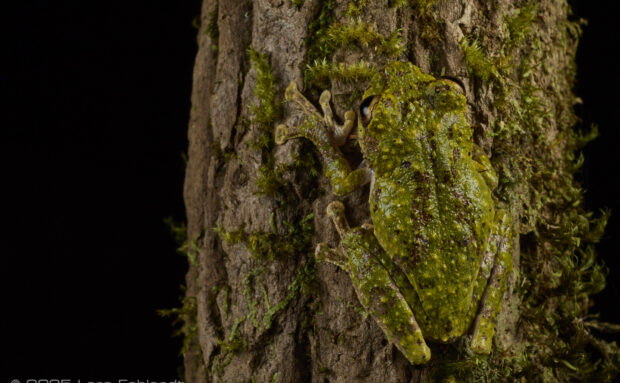
A male Kerangas Bush Frog Philautus kerangae Dring, 1987, of south Sarawak / Borneo around 940m ASL. related posts:

Asian water monitor – Varanus salvator (Laurenti, 1768) of Sabah / Borneo. Varanus salvator is a large semi aquatic monitor lizard native to South and Southeast Asia where it frequents rivers wetlands mangroves and even urban waterways and is among…

Saltwater crocodile – Crocodylus porosus Schneider, 1801 of Borneo – around 80m ASL Crocodylus porosus Schneider 1801, the saltwater crocodile, is the largest living reptile, with exceptional males approaching seven metres and about 1200kg while most adults are smaller; it…
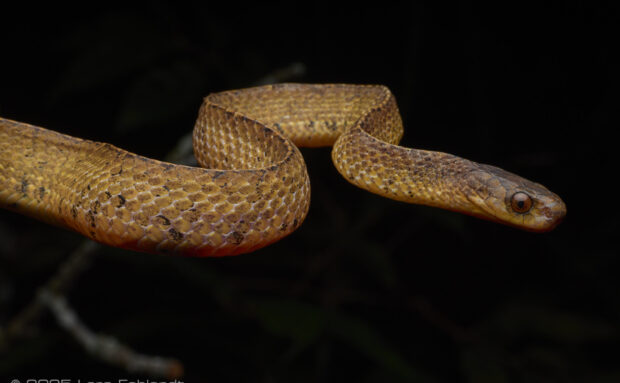
Smooth Slug Snake, Asthenodipsas laevis (BOIE, 1827) – of Sarawak/Borneo – around 1020m ASL. Asthenodipsas laevis (Boie, 1827) is a small, slender pareid snake (Pareidae) endemic to Sundaland and adjacent mainland margins; within Asthenodipsas it belongs to the A. malaccana…
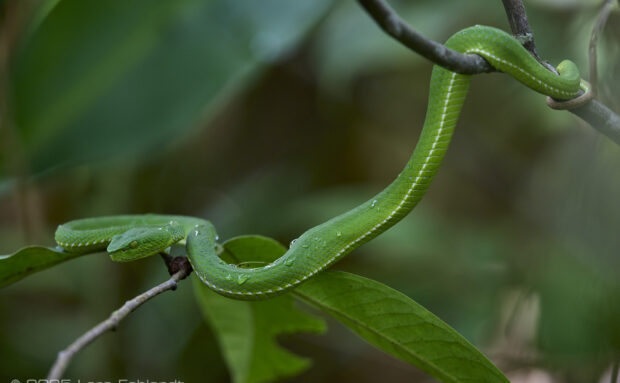
Sabah pit viper, Trimeresurus sabahi Regenass & Kramer, 1981 – of Sarawak / Borneo – around 900m ASL This specimen could be the same individual that I found near the location a few weeks ago. Several distinctive characteristics suggest that…
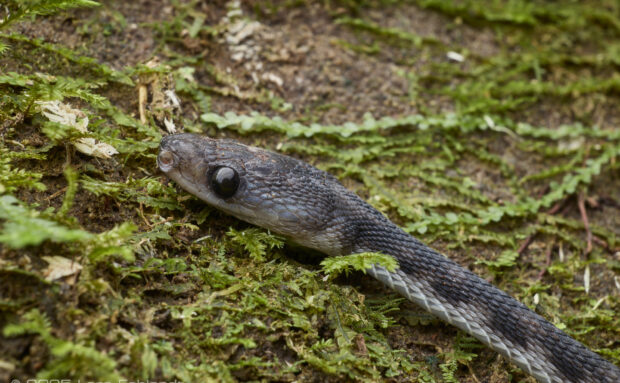
Borneo red snake or Stolickza’s stream snake, Paraxenodermus borneensis (BOULENGER, 1899) – of Sarawak/Borneo – around 1120m ASL. Paraxenodermus borneensis (Xenodermidae) is a rare, Borneo-endemic snake, originally described as Stoliczkaia borneensis (Boulenger, 1899) and reassigned in 2021—based on morphological and…
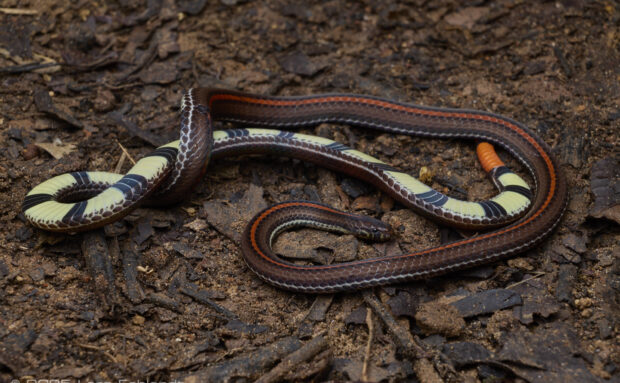
Calliophis intestinalis (thepassi?) (LAURENTI, 1768) of Sarawak/Borneo around 1050m ASL. Calliophis intestinalis is a highly venomous elapid from Southeast Asia (e.g., Malay Peninsula, Sumatra, Borneo, Java), mainly nocturnal and partly leaf-litter/ground-dwelling. When threatened it flips to expose its strongly banded…

Stag Beetle, Dorcus mirabilis (Parry, 1864) – of Sarawak / Borneo around 1060m ASL Adults primarily take liquid carbohydrates, typically tree sap and other sugary exudates, and are most active from dusk through the night; they are often encountered at…
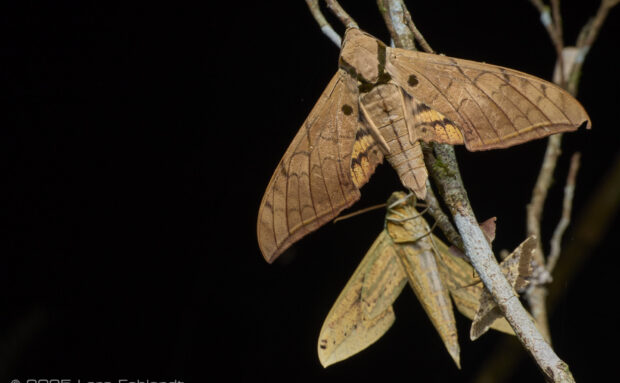
Dark-based gliding hawkmoth, Ambulyx substrigilis Westwood, 1847 – Sarawak / Borneo – around 1000m ASL Ambulyx substrigilis occurs from Sri Lanka, India, Nepal, Bhutan and Bangladesh east to the Andaman and Nicobar Islands, Thailand, Vietnam, Hainan (China), Peninsular and Sarawak…
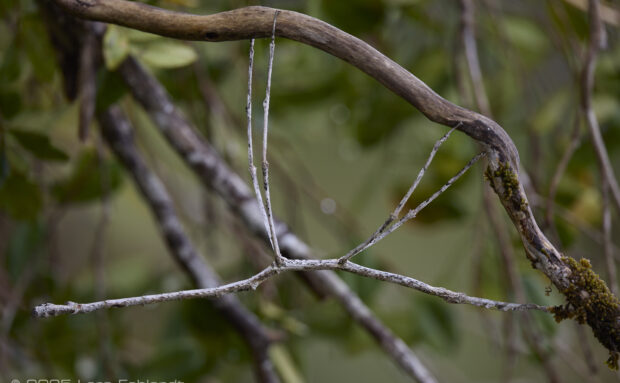
A very large female of Pharnacia borneensis Hennemann & Conle, 2008 Sarawak/Borneo – around 1300m ASL. Pharnacia borneensis is a stick insect (order Phasmatodea) in the family Phasmatidae, tribe Pharnaciini, genus Pharnacia. It was described in 2008 by Hennemann and…
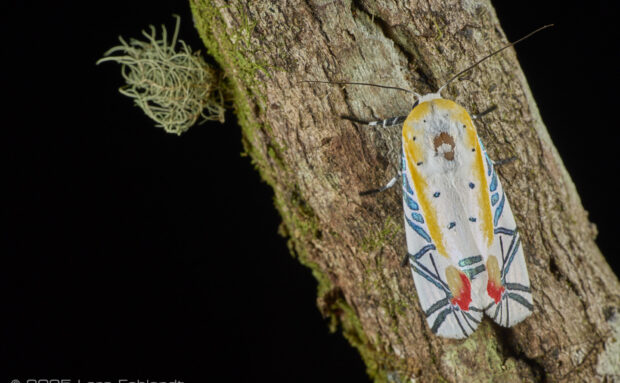
Picasso moth, Baorisa hieroglyphica Moore, 1882 – Sarawak / Borneo – around 1100m ASL The Picasso moth (B. hieroglyphica), is a nocturnal lepidopteran of the family Erebidae, first described by Frederic Moore in 1882. With a wingspan of approximately 50…
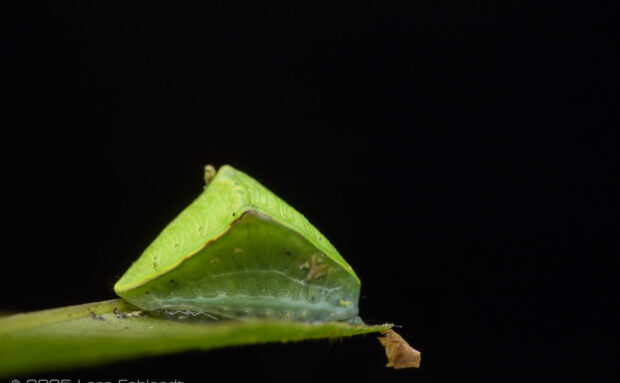
Caterpillar of Demonarosa rufotessellata (Moore, 1879) – Sarawak / Borneo – around 1050m ASL The caterpillar of Demonarosa rufotessellata (Limacodidae) is a non-stinging slug moth larva with a strikingly unusual form. Unlike typical caterpillars, it lacks visible legs or a…
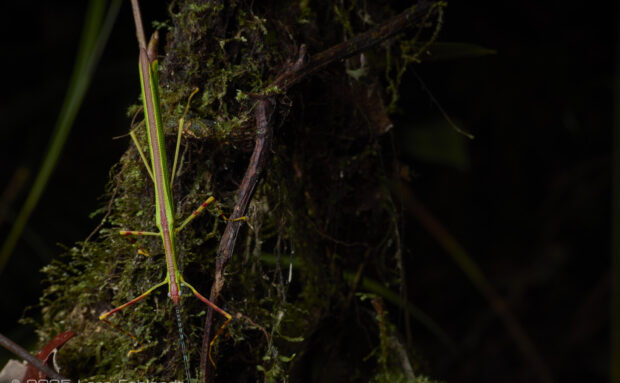
Orthonecroscia cf. keatsooni Seow-Choen, 2016 Sarawak / Borneo around 1300m ASL. Identification is very difficult here, but the species Orthonecroscia keatsooni comes closest to this individual. related posts:

Citharognathus hosei Pocock, 1895 of central Sarawak, Borneo – around 800m ASL. Citharognathus hosei is the type species of the theraphosid genus Citharognathus within the subfamily Ornithoctoninae, described from Baram in Sarawak on Borneo from material collected by Charles Hose.…
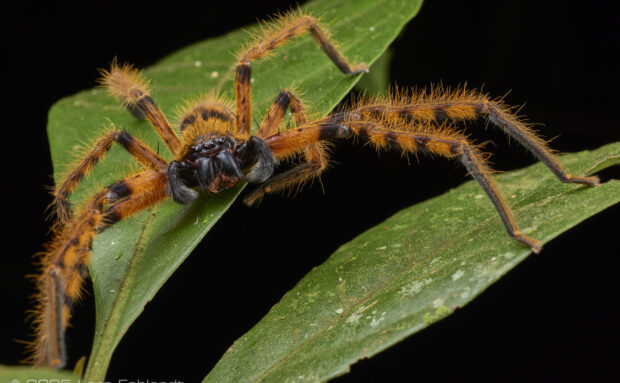
Giant orange Huntsman Spider – Rhitymna pinangensis (Thorell, 1891) of Sarawak / Borneo – around 900m ASL. Rhitymna pinangensis (Thorell, 1891) is a huntsman spider (family Sparassidae) and the type species of the genus Rhitymna Simon, 1897. It was originally…
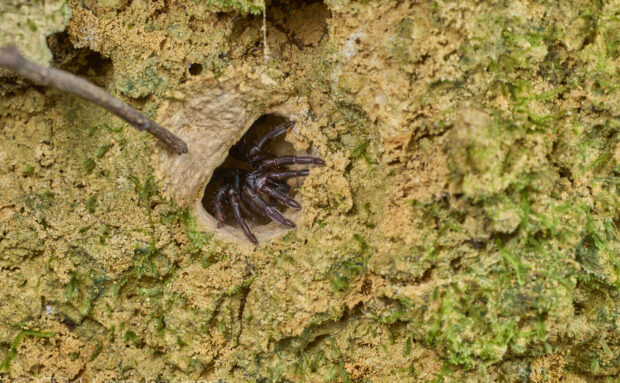
Brushed trapdoor spider, Barychelidae family of Sarawak / Borneo around 200m ASL – probably Rhianodes sp. – I only discovered this trapdoor spider by accident on the edge of a cliff in the forest, as it only looked out of…
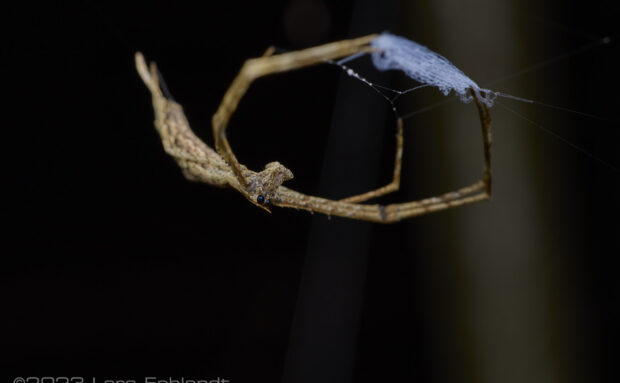
Net-casting spiders Deinopis sp. from Sarawak / Borneo around 100m ASL – Deinopis Macleay, 1839 – Deinopidae of Borneo, commonly known as Ogre-faced Spiders or Net-casting spiders, because of their ability to cast silken nets at their prey. The posterior…
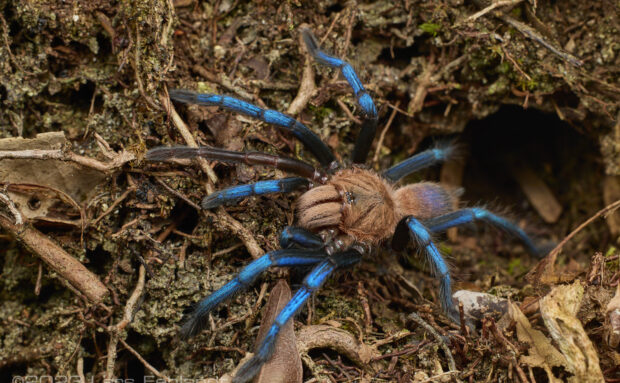
Birupes simoroxigorum (Theraphosidae), of south Sarawak, Borneo. I haven’t seen this Birupes simoroxigorum in a while. But since Chien, Pearl and I discovered and first photographed this species we have been able to record this beautiful blue tarantula at more…
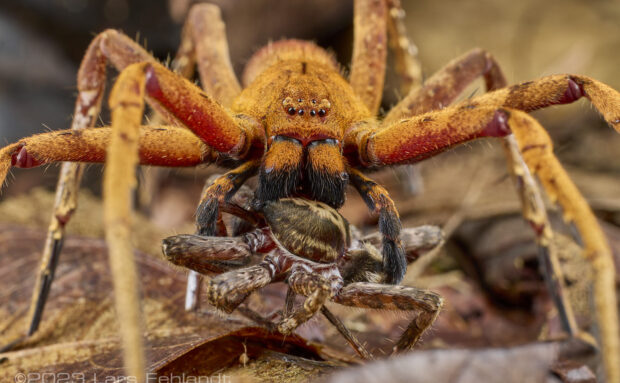
Giant orange Huntsman Spider – Heteropoda sp. of south Sarawak. This Heteropoda sp. is quite widespread in Borneo’s lowland rainforests and is a typical inhabitant of deciduous litter, it is very rare to find this species on trees. As you…
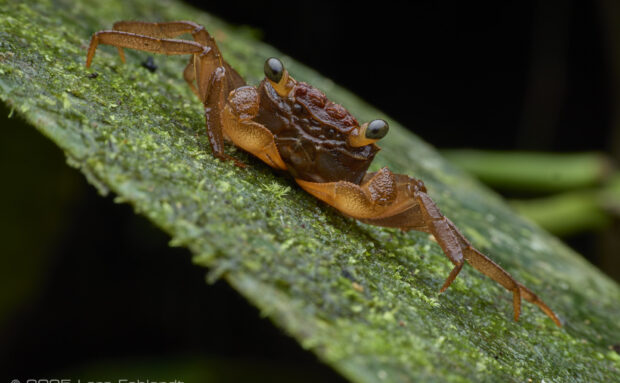
Undescribed vampire crab, Geosesarma sp. – of Sarawak & Kalimantan / Borneo around 1000m ASL. Note: This Geosesarma will be described shortly. Geosesarma De Man, 1892 (Sesarmidae) is a genus of small, semi-terrestrial freshwater crabs occurring primarily in Southeast Asia, where…
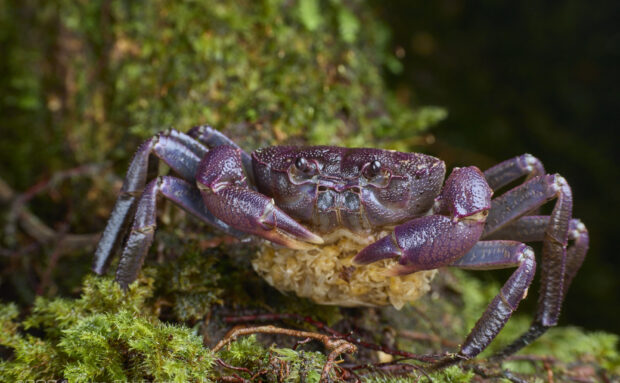
Arachnothelphusa cf. merarapensis from central Sarawak / Borneo – around 1600m ASL We already knew from the crab genus Arachnothelphusa that they must have a direct development. This in-situ photo now clearly shows for the first time that this is…
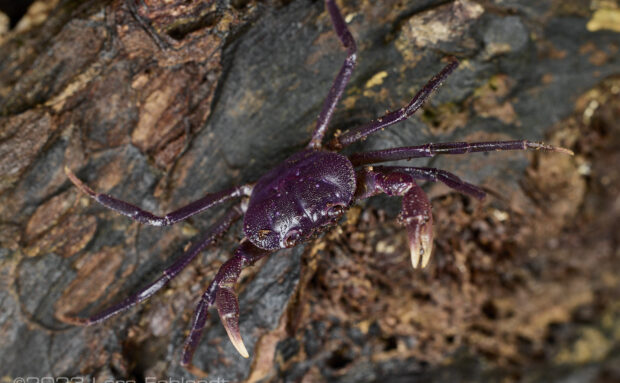
Arachnothelphusa sp. lowland from Sabah / Borneo I found an Arachnothelphusa species in Tawau almost 6 years ago, but it was in the highlands at a altitude of over 1000 m. Either there are two species here, or this Arachnothelphusa…
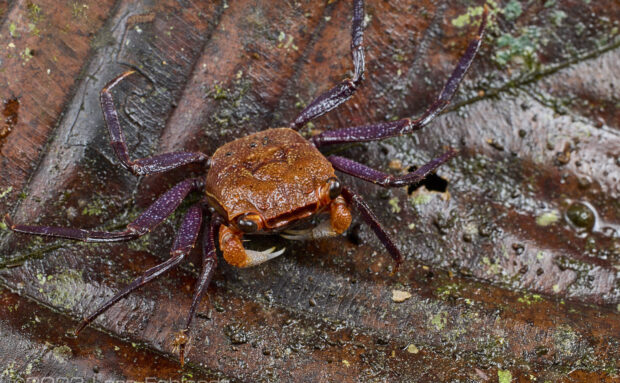
Sabah vampire crab, Geosesarma sabanus Ng, 1992 – of Sabah / Borneo around 100m ASL. related posts:
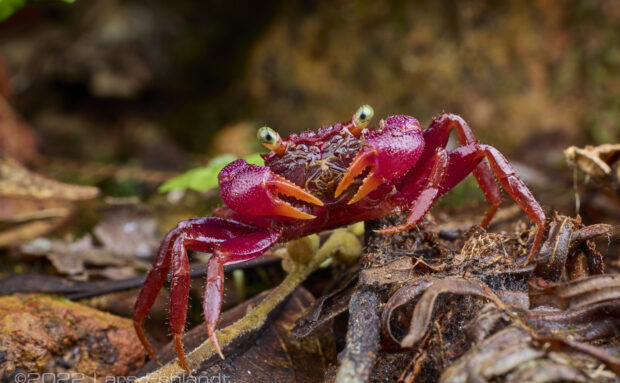
Lars’s vampire crab, Geosesarma larsi Ng & Grinang, 2018 – of south Sarawak around 715m ASL. Since I last visited the habitat of G. larsi in 2017, I have now made my way back to the habitat over five years…
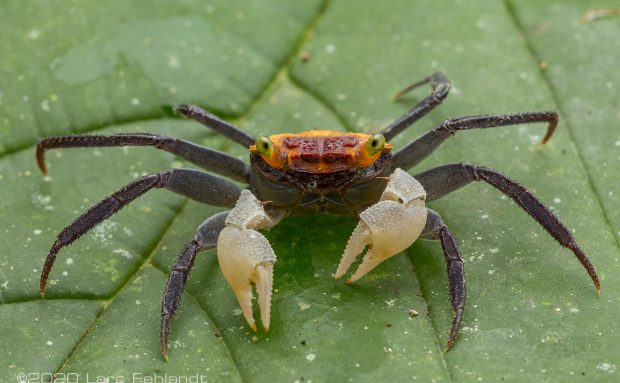
Vampire crab, Geosesarma gracillimum (De Man, 1902) – of central Sarawak, 30m ASL related posts:
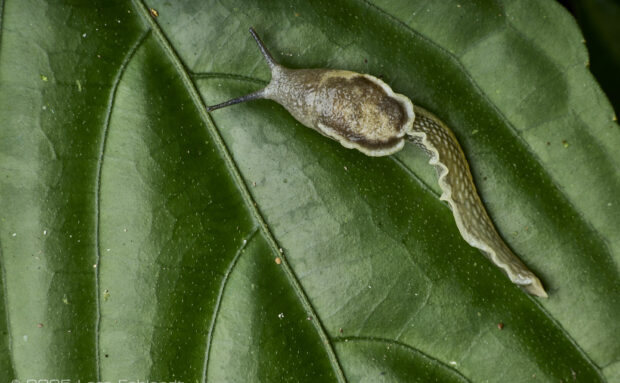
Damayantia carinata Collinge, 1901 – Sarawak/Borneo – around 950m ASL Its an arboreal semislug in the order Stylommatophora and the family Ariophantidae, endemic to Borneo. The species was described from the Kuching area of Sarawak, including Mount Penrissen and Mount…
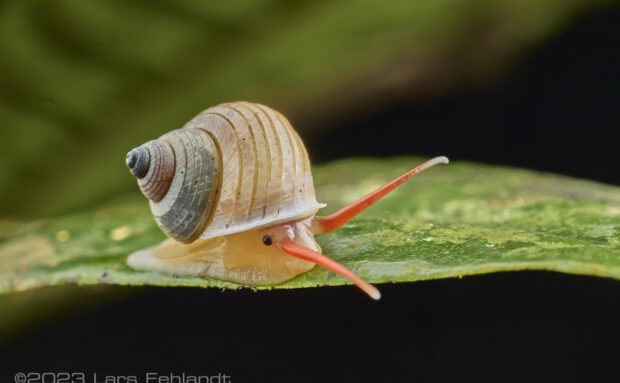
Leptopoma vitreum, Leptopoma sericatum or related species of the family Cyclophoridae – Sarawak/Borneo All Leptopoma snails have gills and an operculum. related posts:
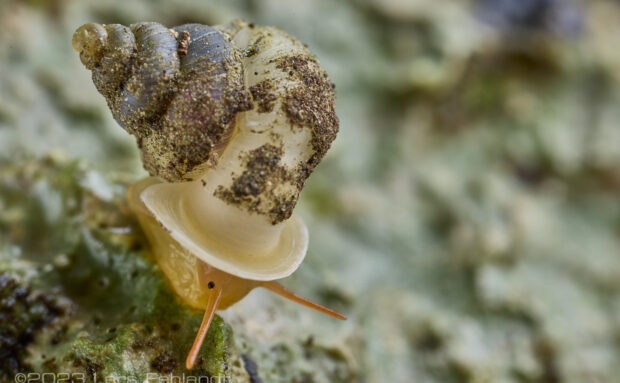
Stomacosmethis hosei (Godwin-Austen, 1889) of south-Sarawak Borneo. The specimen in the photo has a shell length of 5mm. These small snails appear to be adapted primarily to Limestone Hills. related posts:
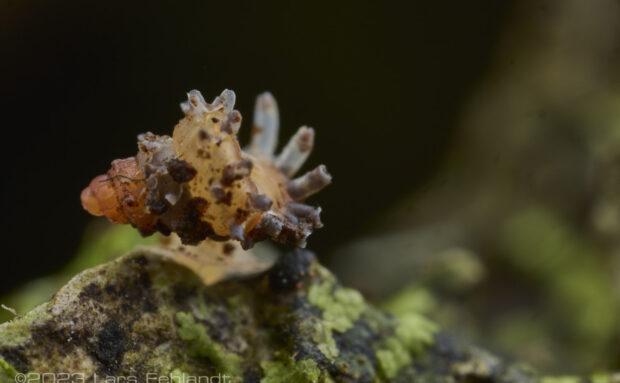
Plectostoma everetti (E. A. Smith, 1893) of South-Sarawak Borneo. The specimen in the photo has a shell length of 1.5mm. Plectostoma everetti within the Plectostoma genus of air-breathing land snails in the family Diplommatinidae which is a family of small…
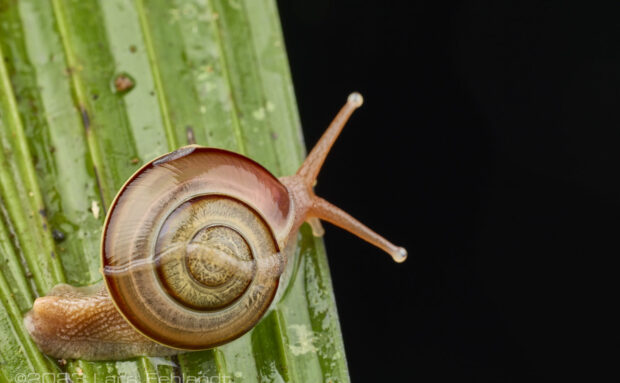
Ariophantid Snail, Vitrinula glutinosa (Metcalfe, 1852) of Central-Sarawak / Borneo Vitrinula glutinosa was described as Helix glutinosa in 1852 by William Metcalfe, who had received the snail shells in November 1850 from the British geologist William John Hamilton. Clearly visible…
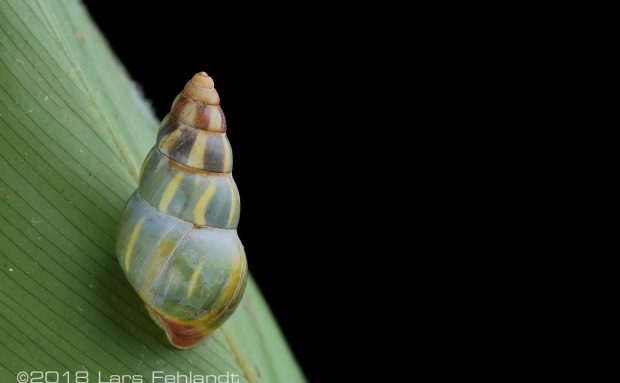
Amphidromus adamsi pictus (Fulton, 1896) or Amphidromus pictus concinnus Fulton, 1896 (?) from West-Sarawak Borneo. related posts:
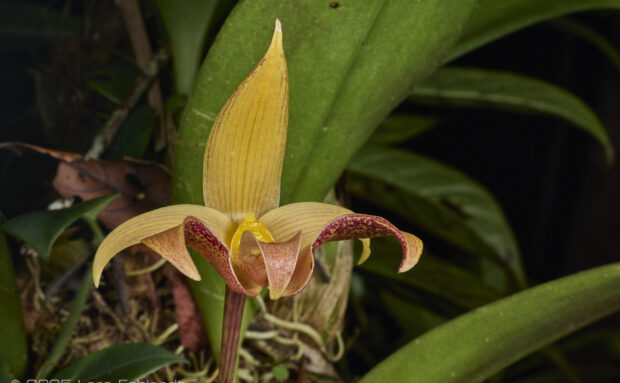
Lobb’s bulbophyllum, Bulbophyllum lobbii Lindl. (1847) – of Sarawak/Borneo – around 1320m ASL. Bulbophyllum lobbii Lindl. (Orchidaceae) is an epiphytic species of sect. Sestochilus, distributed from NE India, Sumatra, Borneo and the Philippines in lowland–montane forests. Plants bear discrete pseudobulbs,…
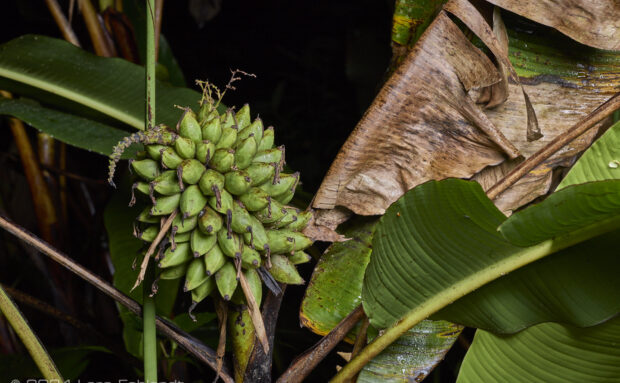
Kinabalu mountain banana, Musa monticola M.Hotta ex Argent – of Sabah/Borneo – around 1620m ASL. Musa monticola is a wild banana endemic to the Malaysian state of Sabah on Borneo, where it is confined to montane habitats around Mount Kinabalu…
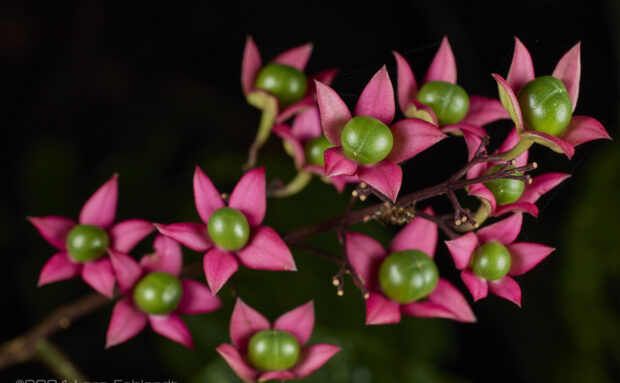
Glory Bower, Clerodendrum sp., of central Sarawak / Borneo around 400m ASL related posts:
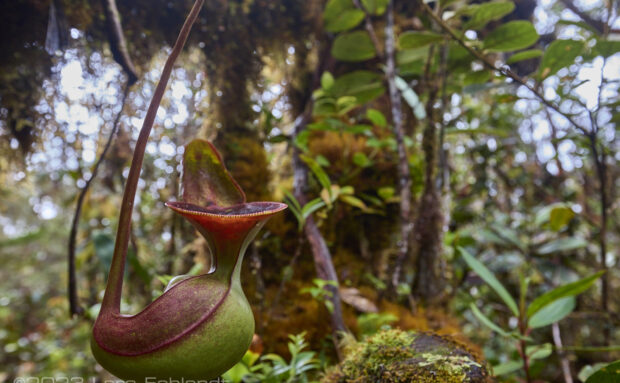
Low’s pitcher-plant, Nepenthes lowii, of north Sarawak / Borneo around 2100m ASL Upper pitchers of Nepenthes lowii, which is a carnivorous plant from the genus pitcher plants (Nepenthes). It was first described around 1859 by botanist Joseph Dalton Hooker. The…
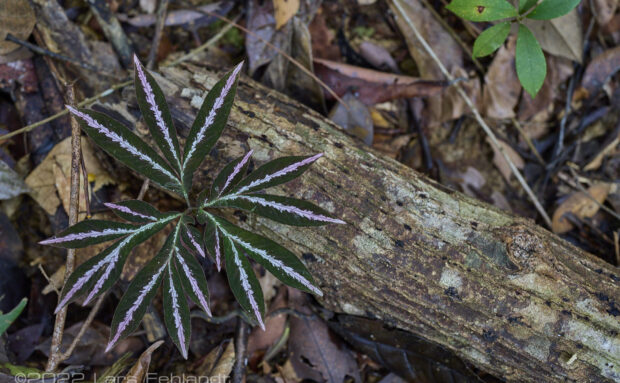
Amorphophallus pendulus Bogn. & Mayo – in situ – south Sarawak / Borneo. related posts:
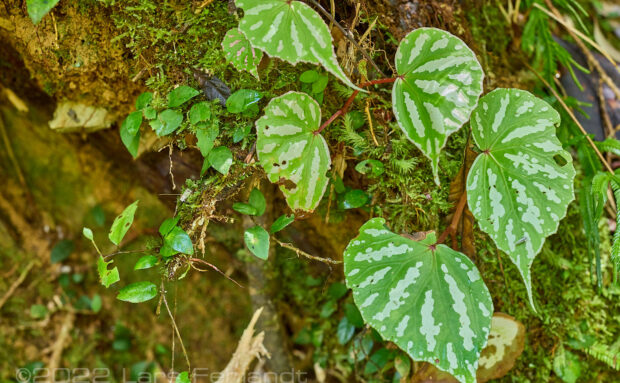
Begonia acidulenta S.Julia & Kiew – in situ – central Sarawak / Borneo. related posts:
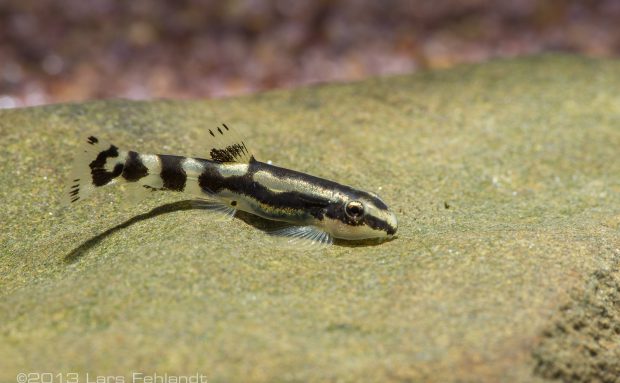
Yaoshania pachychilus (Chen, 1980) related posts:
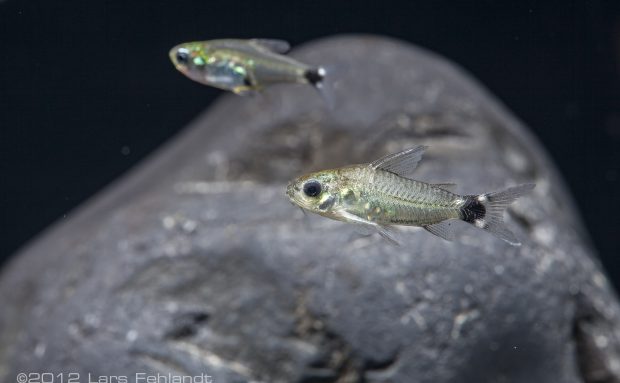
Corydoras hastatus Eigenmann & Eigenmann, 1888 related posts:
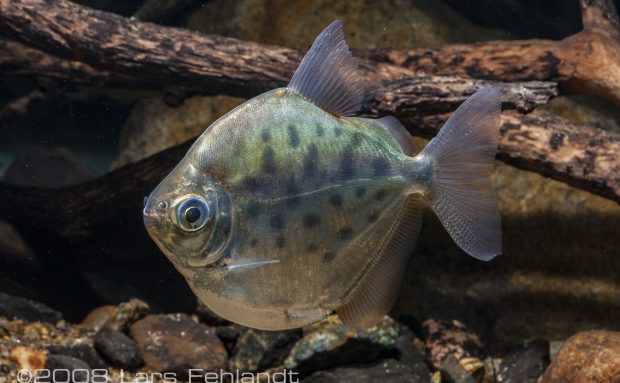
Spotted metynnis – Metynnis maculatus (Kner, 1858) related posts:
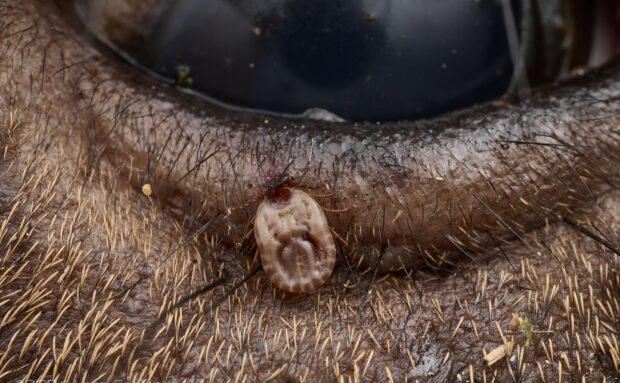
Amblyomma is a genus of hard ticks (Ixodidae). It is found worldwide, with most species occurring in the New World. Some species can transmit infectious diseases as a vector, including Rocky Mountain spotted fever to humans and tularaemia, anaplasmosis and…
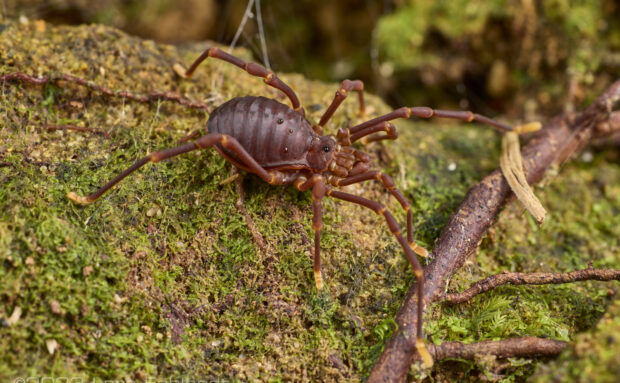
Gnomulus sp.a harvestman from the genus Gnomulus Thorell, 1890, of south Sarawak Borneo – around 150m ASL. related posts:
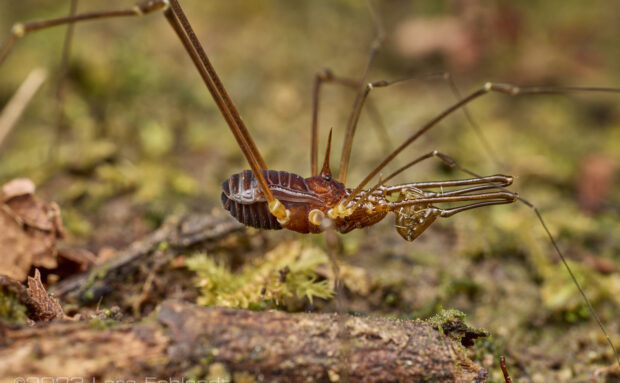
A harvestman from the genus Epedanidae Sørensen, in L. Koch 1886, of south Sarawak Borneo. related posts:
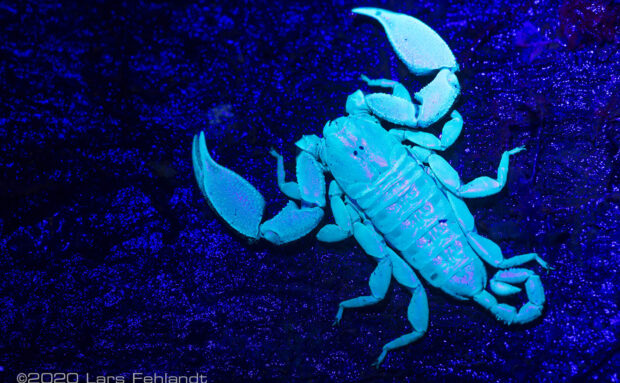
Dwarf Wood Scorpion Liocheles australasiae (Fabricius, 1775), of central Sarawak Borneo, under UV-light. Most scorpions glow a blue-green color when illuminated by ultraviolet light with a wavelength of around 380nm. related posts:
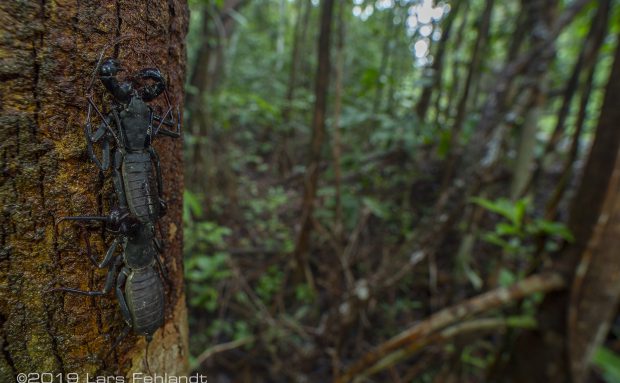
Whip-Scorpion, Thelyphonus borneensis Kraepelin, 1897 – of Sarawak / Borneo Have a look at this in situ shot of Thelyphonus borneensis, whip scorpions or vinegaroons are members of the Uropygi order and the foreplay is not that easy like in the…
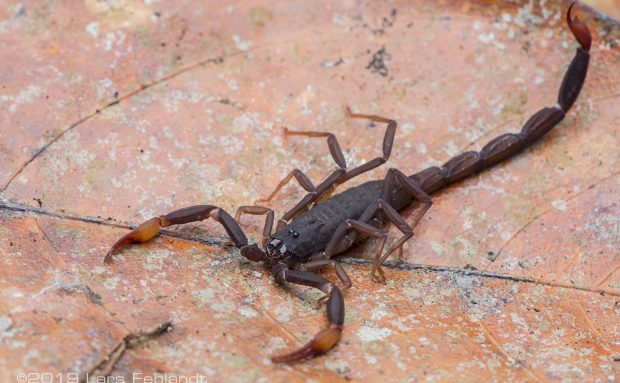
Bark Scorpion Lychas sp., from east Sarawak Borneo probably Spelaeolychas hosei (Pocock, 1891) related posts:

An early morning birth of a proboscis monkey – Nasalis larvatus Wurmb, 1787 – of Sabah / Borneo. Births of proboscis monkeys have rarely been documented, especially during the daytime. Nasalis larvatus reproduction is polygynous, with groups of males in…

Philippine slow lori, Nycticebus menagensis (Lydekker, 1893) of Borneo, around 800m ASL. Nycticebus menagensis (Philippine slow loris) is a nocturnal, arboreal strepsirrhine primate of the family Lorisidae, distributed in northern and eastern Borneo and parts of the southern Philippine archipelago.…
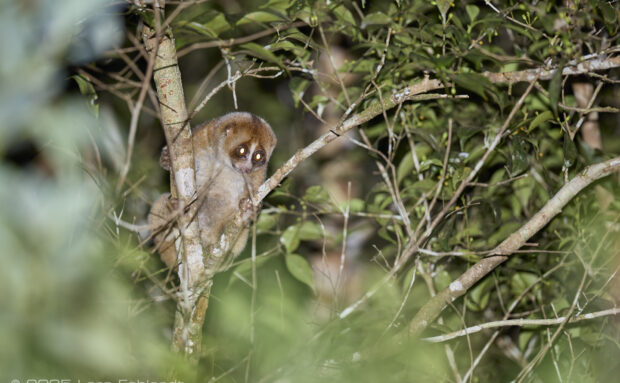
Philippine slow lori, Nycticebus menagensis (Lydekker, 1893) of south Sarawak, around 950m ASL. Nycticebus menagensis (Philippine slow loris) is a nocturnal, arboreal strepsirrhine primate of the family Lorisidae, distributed in northern and eastern Borneo and parts of the southern Philippine archipelago.…
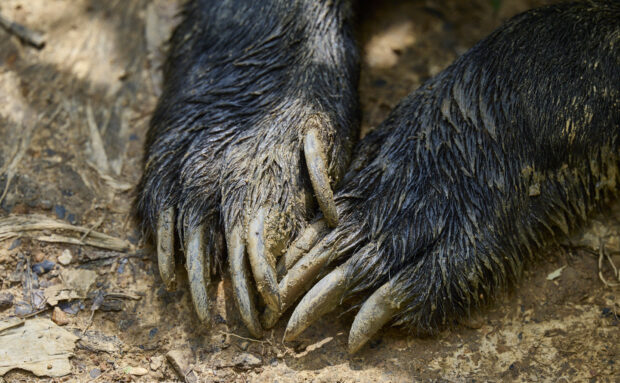
Bornean sun bear, Helarctos malayanus euryspilus Horsfield, 1825 – of Sabah / Borneo at Bornean Sun Bear Conservation Centre Helarctos malayanus euryspilus is the Bornean subspecies of the sun bear confined to the forests of Borneo and belonging to a…
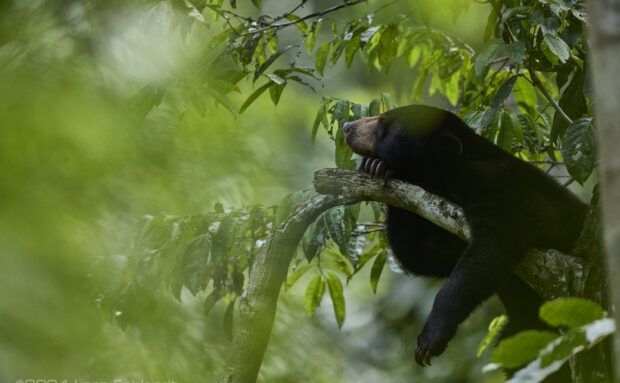
Bornean sun bear, Helarctos malayanus euryspilus Horsfield, 1825 of Borneo The sun bear is the smallest and best adapted to a tree-dwelling lifestyle within the Ursidae. Sun bears are nocturnal, during the day they sleep in the trees, around 2…
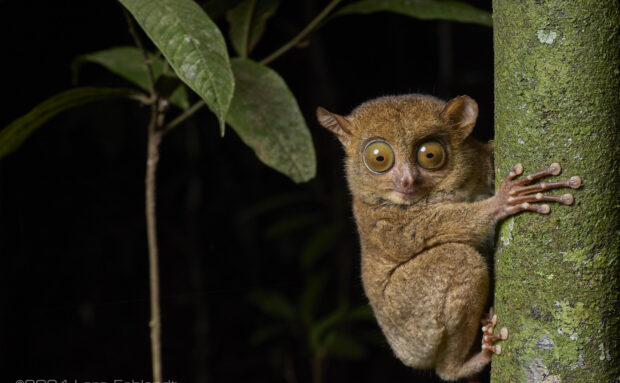
Horsfield’s tarsier, also known as the western tarsier, Cephalopachus bancanus (Horsfield, 1821) of south Sarawak / Borneo I don’t know which animals are my favourites, but these little creatures of the rainforest definitely occupy a top place in my personal…
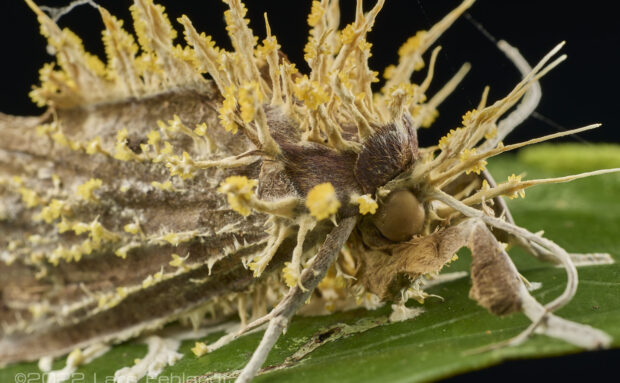
This Borneo moth is infected by a Cordyceps fungus, probably Cordyceps tuberculata(?). The parasitic fungi grow through the host and first form a subiculum, from which aggregate fruiting bodies, so-called stromata, then grow. All Cordyceps species are parasitic on arthropods…
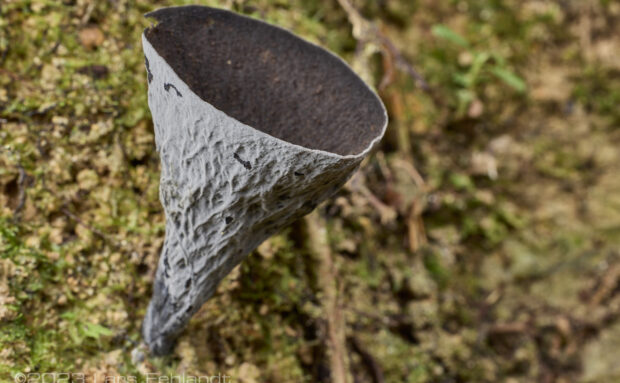
Unknown fungi species from Sout-Sarawak / Borneo, Comatoderma ssp.(?) or Podoscypha ssp.(?) related posts:
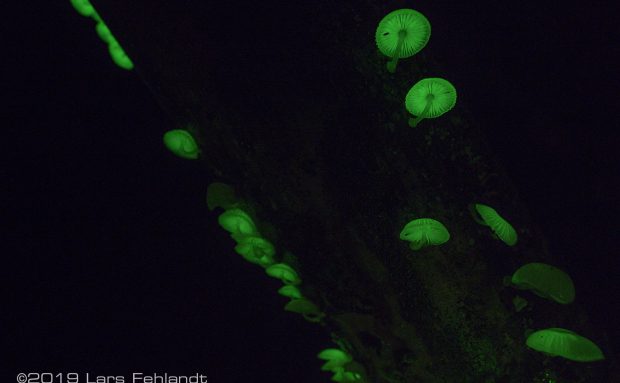
Bioluminescent mushrooms like this Mycena sp., of central Sarawak, begins to glow at night. With their own light they can attract insects, which could pick up spores on their bodies. With this behavior the Mushroom spread the spores over a…
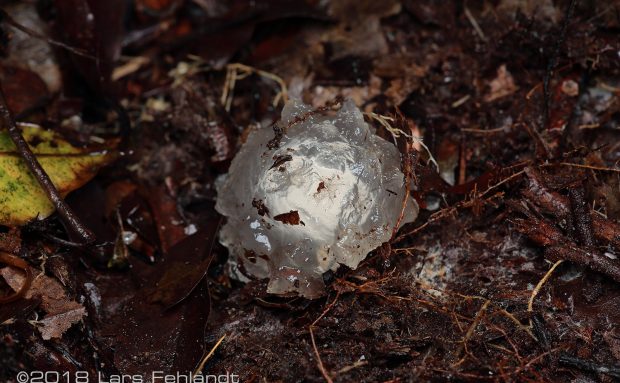
buffalo eye fungus or indonesian stalked puffball, Calostoma sp. of Borneo (Sarawak / Kalimantan) The Iban-tribe called them Kulat Mata Babi (Boar-Eye-Mushroom) or in Bahasa Kulat Mata Pelanduk (Mouse-Deer-Eye-Mushroom) (another local names: kulat mata lembu, mata kerbau), is an edible…
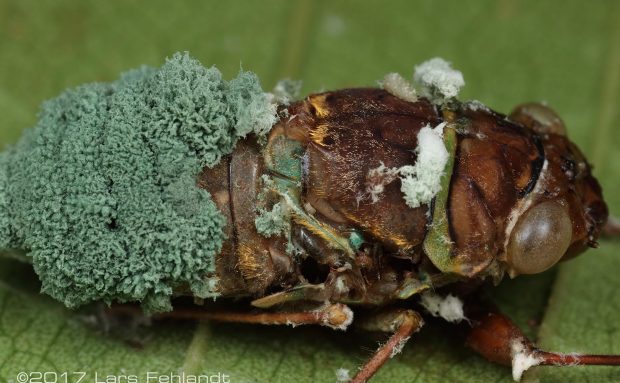
Cicada infected by a Cordyceps-fungus(?) of South-Sarawak/Borneo. related posts:
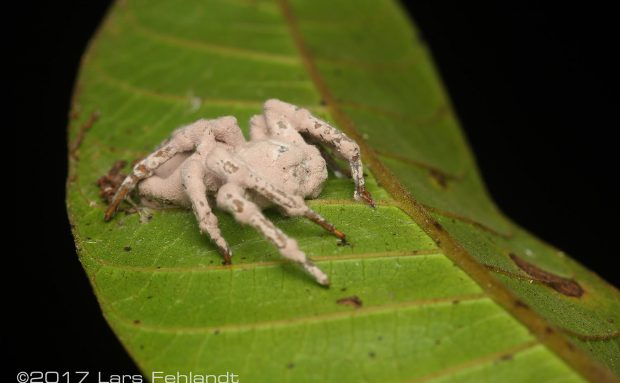
Infected by a Cordyceps-fungus of Central-Sarawak/Borneo – probably Paecilomyces lilacinus (Thom) related posts:
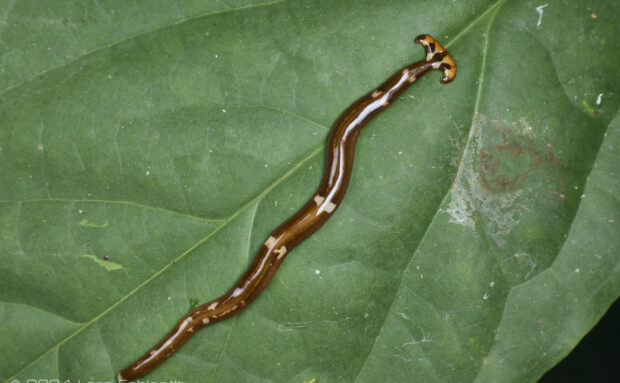
Hammerhead-Worm, probably Umbotectum boehmigi genus of the Geoplanidae Stimpson, 1857 family. Found in Sabah / Danum Valley / Borneo. related posts:
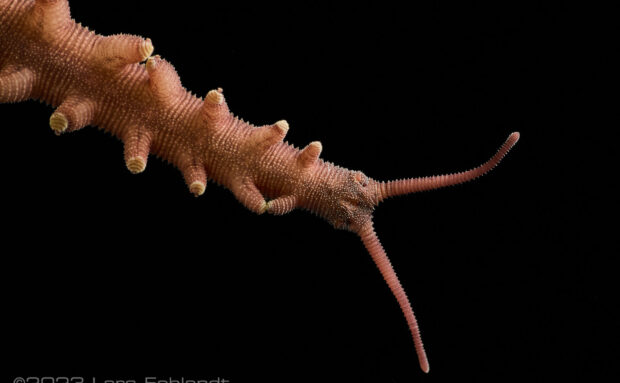
Onychophora commonly known as Velvet Worm, Eoperipatus sp. nov. of Sarawak / Borneo Velvet worms are hardly known from Borneo, there are only a handful of documented animals and even fewer animals that have been photographed. Most animals were labeled…
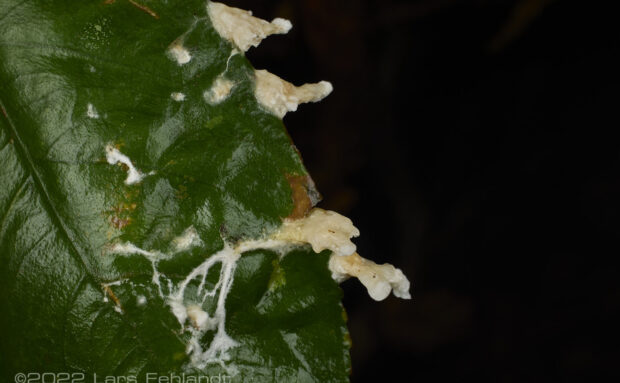
An unspecified slime mold from Sarawak / Borneo. The slime molds (Mycetozoa or Eumycetozoa) are a taxon of unicellular organisms that combine characteristics of both animals and fungi in their way of life, but do not belong to either group.…
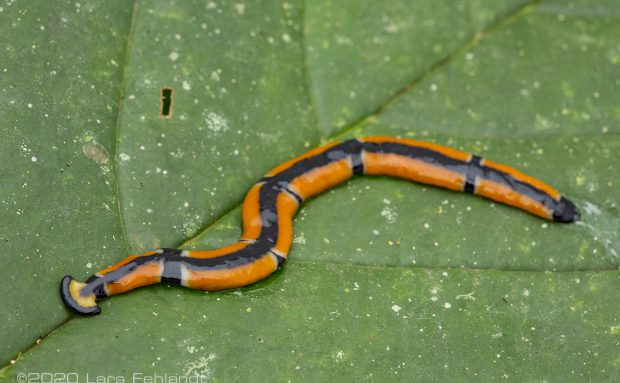
Hammerhead-Worm black&orange, Diversibipalium everetti (Moseley, 1875) of central Sarawak / Borneo related posts:
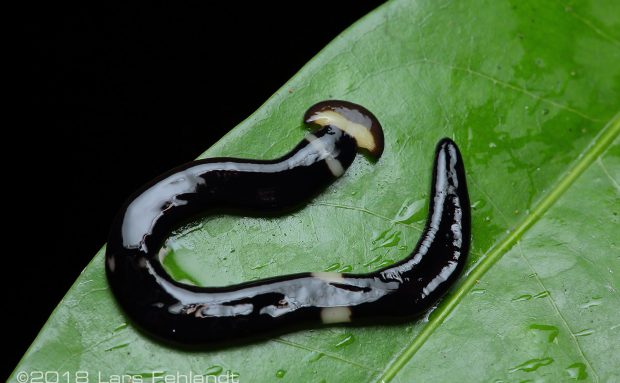
Hammerhead-Worm black&white, probably Bipalium genus of the Geoplanidae Stimpson, 1857 family. Found in south Sarawak near Kuching, 1100m ASL. related posts:
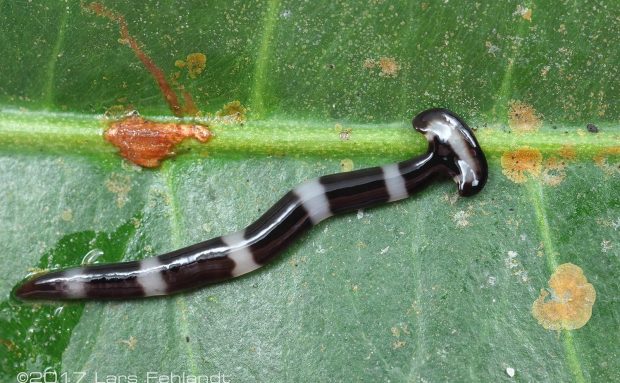
Hammerhead-Worm black&white, probably Bipalium genus of the Geoplanidae Stimpson, 1857 family. Found in Sarawak near Kuching, 20m ASL. related posts:
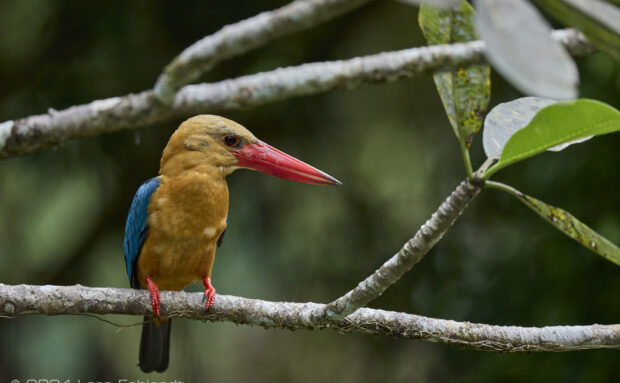
Stork-billed kingfisher – Pelargopsis capensis (Linnaeus, 1766) – P. c. innominata (van Oort, 1910) – of Borneo (200m ASL) Pelargopsis capensis is a large tree kingfisher of the family Alcedinidae that is widely but patchily distributed from the Indian subcontinent…
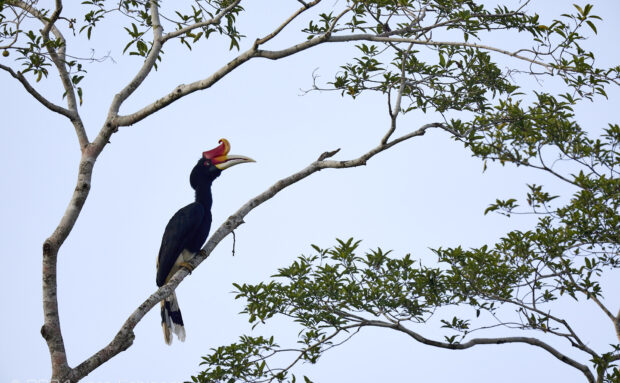
Rhinoceros hornbill – Buceros rhinoceros Linnaeus, 1758 (B. r. borneoensis Schlegel & Müller, S, 1845) – of Borneo (300m ASL) Buceros rhinoceros Linnaeus 1758, the rhinoceros hornbill, is a large canopy dwelling hornbill of the Sundaic region where it inhabits…
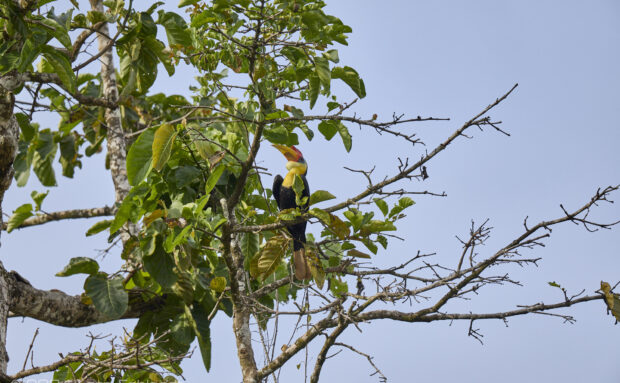
Wrinkled hornbill or Sunda wrinkled hornbill – Rhabdotorrhinus corrugatus (Temminck, 1832) – of Borneo (100m ASL) Rhabdotorrhinus corrugatus, the wrinkled hornbill, is a canopy frugivore of the Sunda region, occurring in southern Thailand, Peninsular Malaysia, Borneo, Sumatra and nearby islands,…
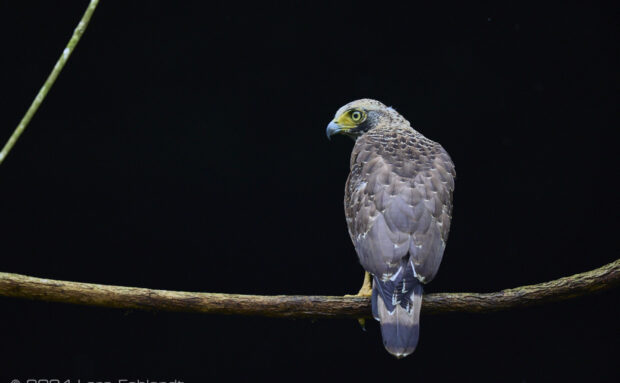
Crested serpent eagle, Spilornis cheela (Latham, 1790) of Borneo. The Crested Serpent Eagle is a medium sized raptor of tropical Asia that favors forests and edges and is often seen soaring above the canopy; adults are dark brown with a small…
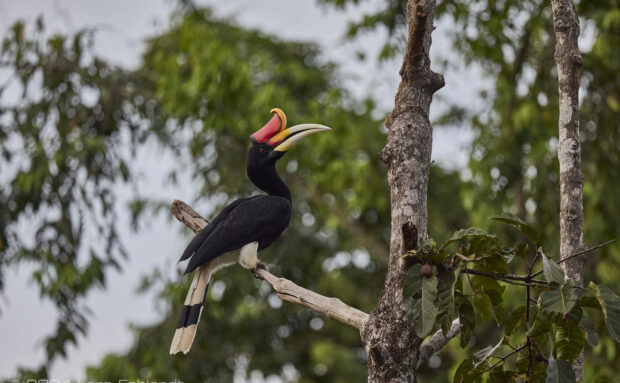
Rhinoceros hornbill – Buceros rhinoceros Linnaeus, 1758 (B. r. borneoensis Schlegel & Müller, S, 1845) – of Borneo (300m ASL) Buceros rhinoceros Linnaeus 1758, the rhinoceros hornbill, is a large canopy dwelling hornbill of the Sundaic region where it inhabits…
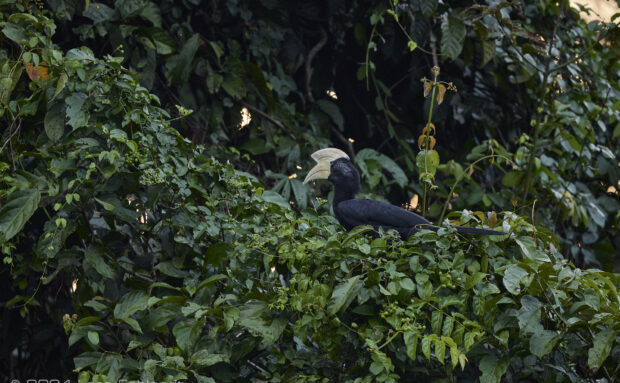
Male of the black hornbill – Anthracoceros malayanus (Raffles, 1822) – of Borneo (400m ASL) Anthracoceros malayanus is a Sundaic lowland hornbill of the family Bucerotidae that occurs from southern Thailand through Peninsular Malaysia Sumatra and Borneo where it inhabits…
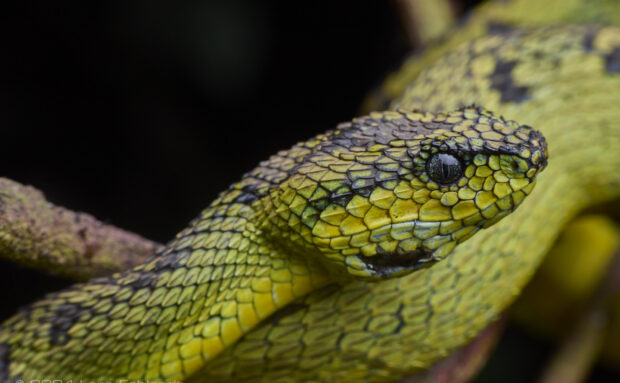
Great Lakes Bush Viper, Atheris nitschei TORNIER, 1902 of the Rwenzori Mountains / Uganda related posts:
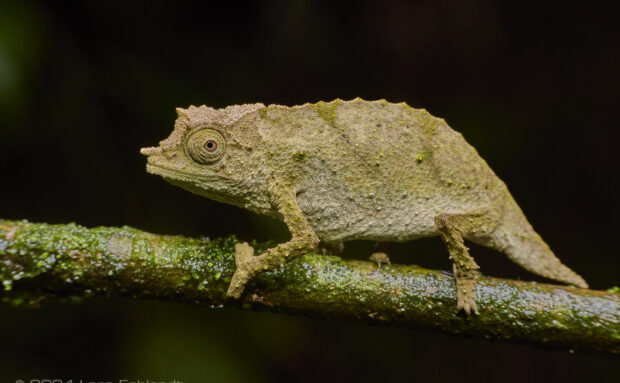
Mountains of the Moon pygmy chameleon, Rhampholeon monteslunae HUGHES, BEHANGANA, TILBURY, DEHLING, KUSAMBA & GREENBAUM in HUGHES et al. 2024 of the Rwenzori Mountains / Uganda related posts:
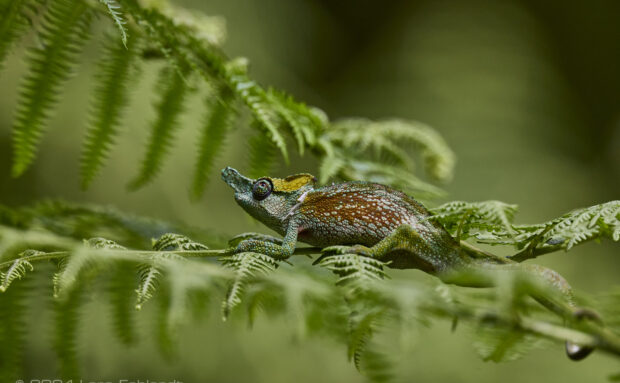
Strange-horned chameleon, Kinyongia xenorhina (Boulenger, 1901) of the Rwenzori Mountains / Uganda related posts:
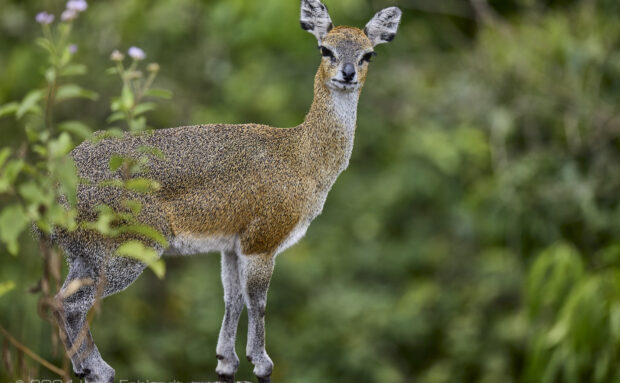
Klipspringer, Oreotragus oreotragus aureus (Zimmermann, 1783) of the Lake Mburo / Uganda related posts:
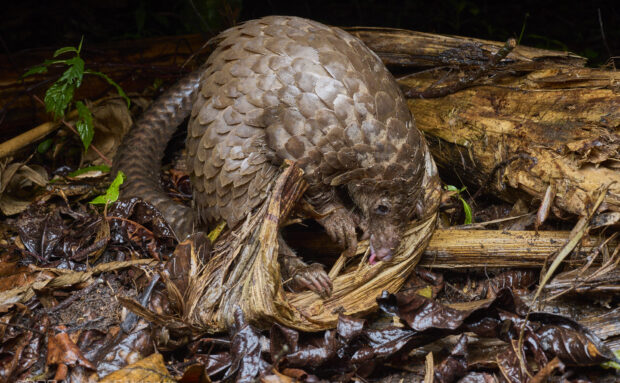
The tree pangolin or also known as the white-bellied pangolin, Phataginus tricuspis mabirae (Rafinesque, 1821) of Uganda – Bwindi The white-bellied pangolin is rare because it is severely threatened by illegal trade and habitat loss. Its scales are used in…
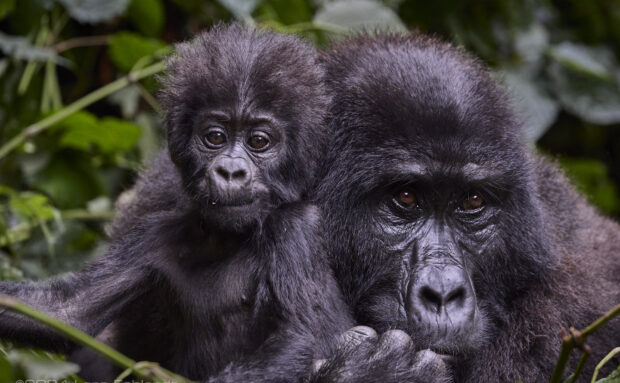
Mountain Gorilla, Gorilla beringei beringei Matschie, 1903 of the Rushegura family in Uganda – Bwindi Encountering mountain gorillas in Uganda is an extraordinary experience, offering a glimpse into the lives of one of the world’s most endangered species. Found primarily…